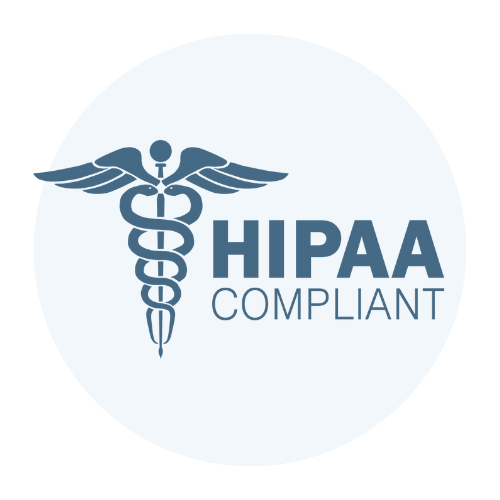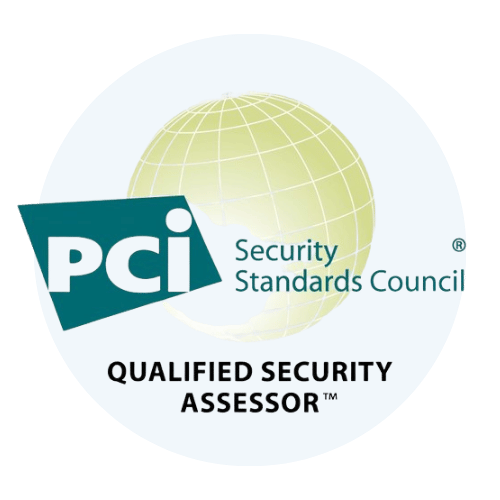Building Continuous Security Monitoring: A Framework for IT and Security Leaders
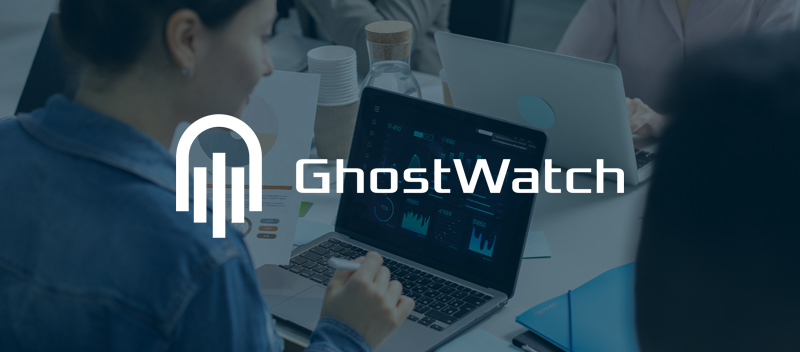
TL;DR Continuous Security Monitoring (CSM) is essential for detecting threats, enhancing compliance, and safeguarding critical systems in real-time. It provides businesses with proactive defense through rapid threat response, vulnerability scanning, and centralized visibility. TrustNet’s GhostWatch platform simplifies CSM implementation with quick deployment, seamless integration, and advanced insights, helping organizations mitigate risks and stay secure 24/7. 75 ransomware groups. Nearly 6,000 businesses targeted in 2024 alone. With average payouts nearing half a million dollars, the stakes couldn’t be higher. These alarming figures underscore the critical need for robust, proactive security measures like Continuous Security Monitoring (CSM). CSM goes beyond traditional security approaches by offering real-time visibility, threat detection, and immediate responses to risks before they escalate. For organizations today, it’s not only a strategic advantage but an operational necessity. Read on to explore what CSM is and why it’s crucial for safeguarding your critical resources. What is Continuous Security Monitoring Continuous Security Monitoring (CSM) is an automated process designed for real-time surveillance of IT systems. Its goal is to detect vulnerabilities and stop cyber threats before they can disrupt operations. By using CSM platforms and managed CSM services, organizations can protect critical systems and respond to risks swiftly. How Continuous Security Monitoring Works CSM follows a clear, actionable process to ensure strong protection: Real-Time Data Collection: It continuously monitors data from endpoints, applications, and networks to identify threats as they occur. Vulnerability Scanning and Threat Analysis: CSM scans systems for weaknesses and analyzes potential cyber threats to prevent breaches. Machine Learning for Anomaly Detection: Advanced machine learning spots unusual behavior, connects related events, and highlights risks that need immediate attention. Centralized Visibility Through Integration CSM integrates with tools like Security Information and Event Management (SIEM) systems to unify data and simplify incident responses. Key features include: Rapid Threat Response: With Managed Detection and Response (MDR), CSM provides 24/7 monitoring to detect and stop threats instantly. Proactive Malware Defense: Next-Gen Antivirus and Endpoint Detection & Response identify and block harmful activities before they escalate. Real-Time Protection: Prevent unauthorized modifications to files and applications to safeguard your environment. In summary, CSM offers businesses a proactive way to manage evolving risks. By combining data collection, security analysis, orchestration, and threat classification, businesses can build real-time defense against potential threats. Implementing Continuous Security Monitoring in Your Organization An effective CSM combines cutting-edge tools, shared visibility, and skilled personnel to address emerging risks while maintaining compliance. However, implementing CSM can be daunting without the right support. The GhostWatch platform, developed by TrustNet, is designed to simplify and streamline every aspect of CSM adoption. Here’s how TrustNet directly supports these implementation steps: — Baseline Assessment Made Easy TrustNet’s technical expertise ensures precise baseline assessments. With its GhostWatch platform, you can gain deep insights into your system’s vulnerabilities and strengths through detailed security evaluations. This foundation helps you set achievable goals and refine your security strategy. — Seamless Tool Integration The infrastructure provisioning capabilities of GhostWatch allow for fast, painless integration with your existing systems. Whether you operate on-premises, in the cloud, or across hybrid environments, GhostWatch ensures continuous visibility and optimized security performance. — Accelerated Onboarding Time is of the essence when strengthening cybersecurity. TrustNet facilitates quick implementation with a streamlined 2-3 week deployment process, so you can begin reaping the benefits of robust CSM without disruption. — Skill Development and Knowledge Sharing TrustNet goes beyond tools by providing end-to-end support that empowers your team. Through its Accelerator+ framework, which combines advisory, automation, and audits/assessments, TrustNet ensures your team is equipped to act on key insights, fostering a collaborative and responsive security culture. How CSM Solves the Biggest Pain Points IT managers, CISOs, security analysts, and business leaders face tough challenges in maintaining strong cybersecurity. Here’s how CSM directly tackles these critical pain points: Pain Point 1: Limited Budgets Tight budgets make securing systems against advanced threats a constant battle. How CSM Solves It: CSM lowers costs by preventing expensive breaches and reducing financial losses caused by downtime. Its scalable design grows with your organization, eliminating the need for costly upgrades or additional staffing. Pain Point 2: Alert Fatigue and Overwhelmed Teams The endless stream of security alerts leads to burnout and missed threats. How CSM Solves It: CSM leverages advanced event correlation to cut through the noise, prioritizing critical alerts. By streamlining workflows, it keeps your team focused on addressing the most pressing threats. Pain Point 3: Compliance Complexity Meeting regulations like GDPR, HIPAA, or PCI-DSS can feel like an uphill task. How CSM Solves It: CSM ensures continuous tracking of compliance metrics and provides clear documentation. It simplifies audit processes, closes compliance gaps, and shields your organization from legal risks or penalties. Pain Point 4: Operational Disruptions Cyber incidents disrupt business operations, damage trust, and cost money. How CSM Solves It: With 24×7 monitoring and real-time detection, CSM spots potential risks early and neutralizes them. This ensures uninterrupted operations and builds trust with your customers. Pain Point 5: Evolving Threats The fast pace of new cyber threats leaves little room to respond effectively. How CSM Solves It: CSM continuously monitors and neutralizes both evolving and existing threats in real-time. It provides your team with a proactive defense to tackle risks head-on, safeguarding your organization. Pain Point 6: Lack of Actionable Insights Organizations struggle to understand their security posture without clear data. How CSM Solves It: CSM provides detailed reports and analytics, offering real-time insights into vulnerabilities and strengths. This helps leaders make informed decisions quickly while strengthening their strategy. Why TrustNet’s GhostWatch To effectively implement CSM, organizations often turn to specialized platforms like GhostWatch by TrustNet, which provides continuous monitoring and robust protection tailored to your needs. GhostWatch facilitates the key components of effective CSM, including: GhostWatch ensures savings by preventing costly breaches and minimizing downtime. Its scalable design eliminates the need for expensive upgrades or extra staffing while maximizing your existing resources. GhostWatch filters out false alarms, ensuring your team stays focused. TrustNet supplements this with streamlined workflows and expert insights to keep
Unlock the Secrets to Superior Cybersecurity with Penetration Testing
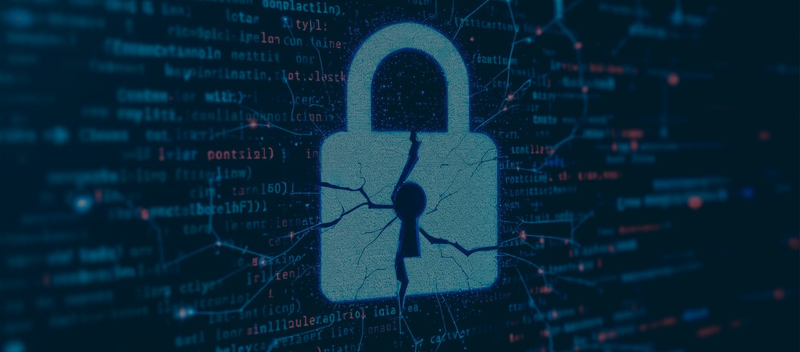
Cyber threats are evolving fast, putting your data, operations, and infrastructure at risk. Penetration testing is a powerful tool for mitigating these threats. By simulating real-world cyberattacks, it helps identify vulnerabilities that could leave your systems exposed. Pen Test also allows organizations to uncover weak points, strengthen defenses, and minimize the risk of costly breaches. Here’s what we’ll cover to help you stay ahead of cyber risks: What is penetration testing? An introduction to how simulated cyberattacks work. Key phases of penetration testing. A step-by-step look at the process. Pen testing benefits. Why it’s essential for any organization’s defenses. Types of penetration testing. Exploring different strategies for diverse challenges. Why TrustNet? Learn how our expertise can enhance your security posture. By the end of this article, you’ll have the insights needed to fortify your defenses and protect your organization from cyber threats. What is Penetration Testing? Penetration testing, or “pen test,” is a proactive cybersecurity measure. It involves authorized simulated cyberattacks to identify and exploit vulnerabilities in an organization’s systems, networks, or applications. The goal is to uncover weak points before they’re exploited by malicious actors, allowing businesses to bolster their defenses and stay one step ahead of threats. Here’s how penetration testing stands out: Penetration testing is more than vulnerability assessments. While vulnerability assessments highlight potential weaknesses, penetration testing goes further by actively exploiting them, providing a clear picture of real-world risks. Penetration testing includes realistic attack simulations. Ethical hackers use the same tools and techniques as cybercriminals. From phishing attempts to exploiting software vulnerabilities, they replicate adversarial tactics to evaluate your systems under real-world conditions. This hands-on approach delivers valuable insights by uncovering gaps that might otherwise remain invisible. It’s essential in strengthening security, supporting compliance, and demonstrating your commitment to protecting sensitive data. Key Phases of Penetration Testing Penetration testing involves a series of systematic phases to ensure a thorough examination of your organization’s security posture. Each phase plays a unique role in identifying, testing, and addressing vulnerabilities. 1. Reconnaissance: This initial phase involves gathering both passive and active intelligence. Pen testers collect publicly available data using Open-Source Intelligence (OSINT) tools, such as domain records and metadata. They map system architectures and analyze exposed services like open ports or outdated software. This step establishes the groundwork for the overall testing process. 2. Scanning: During scanning, testers interact with the organization’s systems to identify active hosts, running applications, and specific service configurations. Tools like Nmap help detect misconfigurations, weak security protocols, and open ports. Automated vulnerability scans are often used to streamline the process of detecting known flaws. 3. Vulnerability Assessment: Here, pen testers evaluate the scanning results to identify exploitable weaknesses. They examine the impact and risk of each vulnerability, such as cross-site scripting (XSS) or insecure direct object references (IDOR), creating a roadmap for targeted exploitation. 4. Exploitation: At this stage, testers attempt to exploit identified flaws using techniques like SQL injection, session hijacking, or privilege escalation. Advanced tools and customized payloads allow ethical hackers to demonstrate practical risks, such as data theft or system control. 5. Reporting: The final step documents the entire process, highlighting vulnerabilities by severity and providing actionable recommendations. Reports include technical findings, exploitation techniques, and strategies for strengthening security. Each phase builds upon the last, creating a comprehensive and actionable evaluation to help organizations fortify their cybersecurity posture. Benefits of Penetration Testing Key benefits of pen tests include: Identify Security Gaps: Discover hidden vulnerabilities like unpatched software, misconfigurations, or outdated systems. Take action to fix these flaws early, reducing the risk of a security breach. Strengthen Defenses: Evaluate how well the existing security controls stand up to potential threats. Use test findings to enhance defense measures, adapting to evolving cyber risks. Ensure Compliance: Stay aligned with industry regulations like PCI DSS or SOC 2 through regular penetration testing. Maintain documentation to demonstrate compliance assurance and avoid costly penalties. Boost Customer Trust: Show clients and stakeholders your dedication to protecting sensitive data. Build confidence in your company’s commitment to minimizing risks and improving its security posture. Conducting penetration tests regularly isn’t just about risk mitigation through pen tests; it’s about staying one step ahead in a constantly changing threat environment. These tests are a powerful tool for reinforcing security while fostering trust and accountability. Types of Penetration Testing Here are the most common types of pen tests to consider: Network Penetration Testing: Focuses on evaluating the security of both external and internal networks. Identifies risks such as misconfigured firewalls, exposed ports, and weak network protocols. Helps protect against threats that could compromise the network’s integrity. Application Penetration Testing: Targets web and mobile applications to detect flaws in their design or code. Exposes vulnerabilities such as SQL injection, cross-site scripting (XSS), and insecure direct object references. Enhances software resilience byaddressing application security risks. Cloud Penetration Testing: Examines cloud infrastructures for misconfigurations or other weaknesses. Highlights risks like insufficient access controls or insecure data storage. Ensures configurations align with best practices to safeguard cloud environments. Social Engineering Tests: Simulates real-world tactics like phishing to test employee awareness. Identifies gaps in human security processes, such as susceptibility to deceptive emails or calls. Reinforces the importance of security training and vigilance. These types of penetration testing collectively strengthen your defenses by addressing threats across technology, infrastructure, and human factors. Why Choose TrustNet for Penetration Testing? With over a decade of experience, TrustNet penetration testing services are designed to uncover hidden vulnerabilities and protect critical assets. Our expert pen testers use industry-standard methodologies and cutting-edge tools to deliver precise and reliable results. But that’s not all. Coming in May 2025, TrustNet will launch the iTrust Pen Test platform as a BETA version. This cutting-edge app is a revolutionary addition to the iTrust Cyber Risk Assessment platform and is designed to take penetration testing to the next level through process automation, efficiency improvement, and AI-Assistant capabilities. What Makes iTrust Pen Test Platform Unique? The iTrust Pen Test App is built to streamline and enhance penetration testing through
Cybersecurity Compliance in 2025: Navigating the Latest Regulations
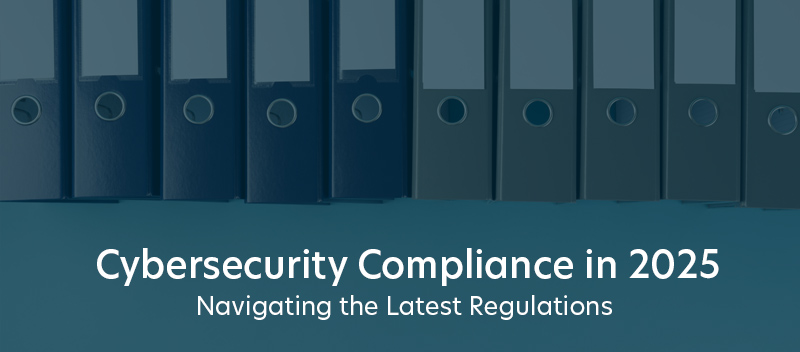
As we go deeper into 2025, businesses must contend with a more complicated regulatory landscape due to swift technology development and evolving risks. Maintaining compliance now involves more than just checking boxes; it calls for strong strategies, progressive methods, and an in-depth understanding of new regulations. Significant changes are already occurring in the regulatory environment, such as AI governance standards and new data protection laws that were developed to address the problems of a hyper-connected world. Compliance, as we know, is changing due to global harmonization initiatives like the GDPR’s development and the advent of IoT security and privacy-enhancing technology. These changes bring significant challenges: Managing requirements across diverse industries, such as healthcare, energy, and finance Preparing for advanced standards like quantum-resistant encryption and blockchain compliance tools Navigating the intricacies of cross-border data transfers TrustNet understands the complex challenges posed by cybersecurity compliance in 2025. Leveraging our deep expertise, innovative solutions, and proactive strategies, we ensure organizations stay ahead of the curve. This guide will provide invaluable insights into the future of data protection regulations, practical strategies to tackle compliance obstacles, and TrustNet’s approach to future-proofing your organization. Key Regulatory Trends Shaping 2025 The cybersecurity regulatory environment in 2025 is undergoing critical shifts, driven by technological advancements and the demand for stronger global governance. Three key areas dominate this evolution — AI governance regulations, IoT security compliance, and the harmonization of global data protection laws. AI Governance Regulations Artificial intelligence (AI) is transforming industries and introducing ethical and security challenges. To mitigate these risks, frameworks like the U.S. “Framework to Advance AI Governance and Risk Management” are setting new benchmarks. Key elements include: Prohibited and high-impact use cases: Identification of AI systems that could harm privacy, human rights, or national security. Pre-deployment risk assessments: Mandating thorough evaluations before launching high-impact AI technologies. Accountability measures: Ensuring adherence to principles of ethical AI in both civilian and national security contexts. IoT Security Compliance The advent of Internet of Things (IoT) devices presents significant cybersecurity challenges. Governments are enacting stricter laws to enhance IoT security, including: NIST frameworks and IoT Cybersecurity Improvement Act for securing networked devices and regulating security of IoT devices. CTIA certifications that mandate standards around encryption, authentication, and secure communication protocols on wireless-enabled devices. Focus on device lifecycle security to maintain compliance throughout IoT deployment. To mitigate risks, businesses should focus on regular vulnerability testing, enforcing authentication protocols, and leveraging advanced monitoring systems. Global Data Protection Laws The global regulatory landscape, particularly the harmonization of data protection laws, is reshaping compliance on a larger scale. Important developments include: GDPR evolution: Enhanced specifications around data transfers, storage, and consent. Cross-border data transfer regulations aimed at safeguarding international data flows. Privacy-enhancing technologies (PETs) such as encryption and data anonymization to meet heightened privacy standards. Organizations must adopt innovative solutions to tackle these challenges and ensure seamless compliance across jurisdictions. TrustNet’s Proactive Approach Addressing the demands of 2025’s regulatory environment requires expert guidance. TrustNet empowers organizations with the following: AI risk management tools for navigating complex governance frameworks. IoT compliance strategies and certification support to mitigate device-specific vulnerabilities. Advanced PET solutions to enhance privacy while ensuring data security. Adaptive compliance frameworks for ongoing global regulation changes. By partnering with TrustNet, businesses gain a trusted ally capable of delivering flexible, future-proof compliance solutions. Industry-Specific Compliance Challenges Cybersecurity and compliance in 2025 require a tailored approach, as industries such as healthcare, finance, and energy face unique obstacles. Healthcare Data Compliance 2025 Healthcare organizations are under greater scrutiny in safeguarding sensitive information. The focus areas include: Enhanced patient data rights: Regulatory updates, such as HIPAA and HITECH Act updates, give patients more control over their data, requiring organizations to improve transparency in data handling. Medical device security: With the rise in connected medical devices, securing these systems is critical to prevent breaches that could impact patient care. Data breach penalties: Non-compliance results in stricter penalties, urging healthcare entities to invest in modernized security solutions. Financial Sector Cybersecurity Regulations 2025 The financial industry is adapting to rapid digital transformation while managing increasing regulatory demands. Key challenges include: Cryptocurrency regulations Governments are imposing stricter rules for the digital currency space, emphasizing anti-money laundering (AML) protocols and robust cybersecurity measures. Open banking security standards Protecting customer data under open banking models requires secure APIs and rigorous customer authentication systems. PCI DSS evolution Updated compliance standards demand improved encryption and continuous monitoring of payment card data. Critical Infrastructure Protection Laws for Energy and Utilities 2025 The energy sector faces rising threats, making cybersecurity a critical priority. Compliance in this field revolves around the following: Critical Infrastructure Information Act (CII Act) of 2002 Focuses on securing and exchanging sensitive information about the country’s critical infrastructure to prevent potential threats. Cybersecurity and Infrastructure Security Agency Act of 2018 Established the Cybersecurity and Infrastructure Security Agency (CISA) to coordinate national efforts in protecting and improving resilience against cyber and physical attacks. National Infrastructure Simulation and Analysis Center (NISAC) Provides advanced simulation and modeling capabilities to assess vulnerabilities, predict risks, and formulate strategies to secure critical infrastructure. TrustNet’s Sector-Specific Expertise With tailored solutions and a commitment to excellence, TrustNet has helped businesses across healthcare, finance, energy, and more meet evolving regulations while enhancing their cybersecurity posture. Here are some standout examples of TrustNet in action: — Optima Tax Relief Optima Tax Relief, a leading tax resolution firm, collaborated with TrustNet to strengthen its IT security infrastructure. The project began with a technology audit, risk assessment, and vulnerability scan, providing a clear roadmap for improvement. TrustNet then deployed its proprietary cybersecurity platform, delivering 24/7 protection and 360° visibility into compliance and security risks. This partnership enabled Optima to confidently address vulnerabilities, ensuring ongoing compliance and resilience. — Calendly The globally recognized CRM and scheduling leader, Calendly, turned to TrustNet to bolster its cybersecurity framework. TrustNet helped implement comprehensive standards, including NIST Risk Assessment, HIPAA, SOC 2, and ISO 27001, ensuring the protection of sensitive customer data. The result? Calendly achieved enhanced compliance, increased
Common Web Application Attacks
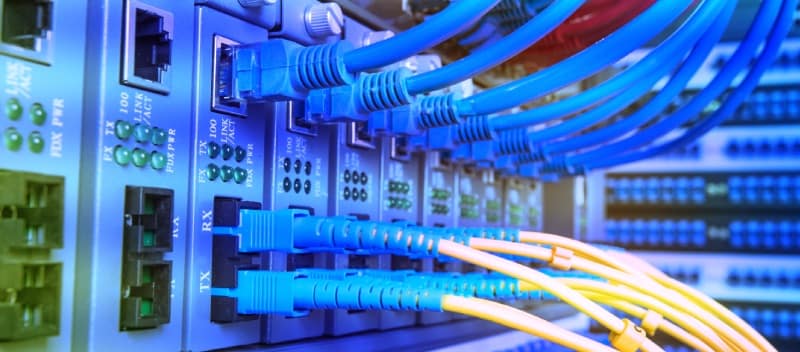
2025 Cybersecurity Blueprint: Advanced Monitoring, Rapid Response, and Threat Mitigation
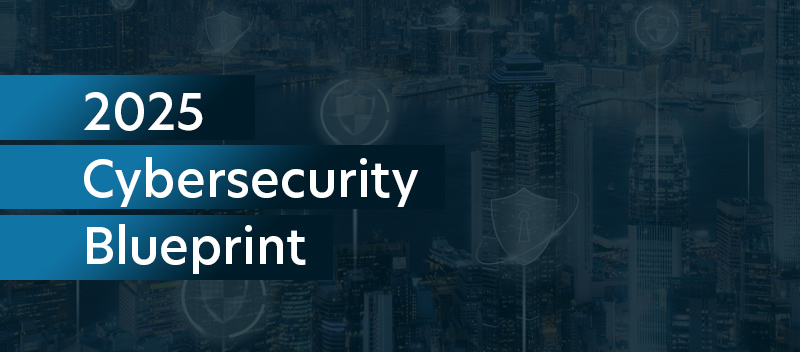
Advanced security monitoring, rapid incident response, and addressing emerging threats are key to defending against today’s dynamic landscape. However, a lot of companies still find it difficult to stay up to date with the most recent cybersecurity best practices. Proactive security monitoring lies at the heart of modern threat detection and mitigation. Continuous monitoring enables real-time identification of suspicious activities, allowing businesses to act before vulnerabilities are exploited. Equally vital is implementing an efficient incident response plan. 2025 also brings emerging threats, from AI-powered cyber-attacks that automate phishing and hacking to deepfake fraud schemes and ransomware’s evolving data extortion methods. The ability to address these developments hinges on staying informed and resilient. This article explores critical topics to enhance your organization’s defenses, including: Security monitoring essentials and tools Steps to craft an effective incident response plan Key threats in 2025, such as AI-driven attacks and IoT exploits Leveraging threat intelligence and automation to stay ahead By the end, you’ll gain actionable insights to fortify resilience and future-proof your cybersecurity defenses today and beyond. The Importance of Security Monitoring Security monitoring is the foundation of effective cybersecurity, providing organizations with the ability to detect and respond to potential threats before they escalate. It involves continuously observing networks, devices, and systems to identify suspicious activities or vulnerabilities. Essential Tools for Effective Monitoring Organizations leverage a variety of tools to ensure robust security monitoring, including: SIEM platforms (Security Information and Event Management): These tools gather information from across your network, look for trends, and offer helpful recommendations on how to deal with possible risks. Intrusion detection systems (IDS) and intrusion prevention systems (IPS): These systems identify unauthorized access attempts and can block them in real-time. Network monitoring tools: These track traffic across your network to detect anomalies that could indicate a breach. Businesses can better anticipate, identify, and reduce security threats by using these solutions in conjunction with advanced security analytics. Benefits of Continuous Monitoring Implementing continuous monitoring provides organizations with several critical advantages, such as: Real-time threat detection to identify and respond to threats immediately, reducing potential damage. Risk mitigation by identifying vulnerabilities before they are exploited. Improved compliance with industry regulations through consistent oversight. Continuous monitoring ensures that organizations are always one step ahead in minimizing downtime and preventing costly breaches. The Role of Automation Automation improves accuracy and efficiency by streamlining security monitoring procedures. With minimal human input, automated systems can correlate data, prioritize warnings, and even respond to risks. Automation speeds up reaction times and removes human error by lowering manual workloads, freeing up teams to concentrate on more complex activities. Discover how TrustNet’s Managed Security service can protect your business from AI-driven threats Building an Effective Incident Response Plan Without a well-defined incident response plan, even a minor security breach can escalate into a significant organizational crisis. It should provide structure and guidance, ensuring that threats are addressed quickly and effectively. Key Components of an Incident Response Plan Crafting a thorough incident response plan involves several essential stages: Stage 1: Preparation – Establish policies, acquire tools, and conduct training to ensure your team is ready to handle incidents. Stage 2: Detection and Analysis – Leverage systems like monitoring tools and SIEM platforms to identify incidents. Collect evidence and assess the nature and scope of the threat. Stage 3: Incident Containment – Act swiftly to isolate affected systems and prevent the threat from spreading further. Deploy containment measures tailored to the specific attack. Stage 4: Eradication – Remove malicious elements from your systems, such as deleting malware or closing exploited vulnerabilities. Stage 5: Recovery – Restore operations by securely bringing systems back online, ensuring no residual threats remain. Stage 6: Lessons Learned – Conduct a post-incident review to identify areas of improvement and refine your security posture based on the experience. Each of these stages plays a vital role in managing incidents without disrupting business operations unnecessarily. Building an Effective Incident Response Team An effective response hinges on having a skilled and cohesive incident response team. Each member should have clearly defined roles, such as incident managers overseeing the process, analysts investigating the threat, and communicators updating stakeholders. Without this division of responsibility, confusion and delays can compromise response efforts. However, even with a strong internal team, managing the complexity and scale of modern threats can be overwhelming. This is where outsourcing Managed Detection and Response (MDR) services becomes crucial. TrustNet’s MDR services, a core offering of our managed security solutions, deliver 24/7 threat monitoring and response through a team of experienced cybersecurity professionals. Our detection and analysis processes leverage advanced tools like monitoring systems and SIEM platforms to quickly identify incidents, collect evidence, and assess the scope of threats. Once a threat is identified, TrustNet’s team takes decisive action to contain it, swiftly isolating affected systems and deploying tailored measures designed to prevent further impact. Investing in training for your response team also ensures they remain current with emerging threats and techniques. Combined with the support of dependable MDR services, your organization can respond faster and more effectively, fostering resilience and safeguarding critical operations. Communication Strategies Transparent communication is crucial during a security incident. Internally, all relevant personnel must be kept informed to maintain coordination. Externally, it’s essential to communicate with affected parties, such as customers or partners, promptly and honestly. A unified message can help reassure stakeholders and preserve trust. Every phase of an incident response plan, from preparation to remediation, is essential. Building a strong plan, a skilled team, and a robust communication framework will equip your organization to handle cyber threats rapidly and effectively. Emerging Cybersecurity Threats in 2025 Staying ahead requires awareness and proactive defenses against risks like AI-powered cyber-attacks, deepfake threats, ransomware evolution, and edge device exploitation. Here’s what organizations need to know. — AI-Powered Cyber-Attacks Artificial Intelligence is reshaping cybercrime. Attackers now use AI to launch large-scale, precision-targeted attacks. Automated phishing schemes mimic legitimate communications with alarming accuracy, while machine learning algorithms identify system vulnerabilities faster than traditional
The Human Factor: Why Cybersecurity Awareness Training is Your First Line of Defense

About 68% of breaches in 2024 were caused by human factors, such as errors in judgment, falling for phishing schemes, or succumbing to social engineering. These incidents reveal a fundamental weakness in most organizations: the human factor in cybersecurity. No matter how advanced your defenses are, employees remain a potential vulnerability. Cyber attackers know this and often exploit lapses in awareness or training to gain access to sensitive information. This is how cybersecurity awareness training becomes critical. By educating employees on how to identify and respond to attacks, organizations empower their workforce to become the first line of defense. Employees can shift from being a weakness to a valuable asset when properly equipped with knowledge and skills. Why invest more in training now? The biggest contributor to data breaches continues to be human error. Customized instruction increases knowledge of social engineering and phishing. Employee education aids in integrating security into day-to-day operations. More than just lowering cyber incidents, cybersecurity awareness training fosters a proactive culture where employees are integral to the organization’s security. Organizations strengthen their resilience and create a more secure, mindful atmosphere for everyone by addressing the human element in cybersecurity. The Human Factor: Understanding the Risk Even with the most advanced security technologies, human error in cybersecurity continues to be a major vulnerability. Employees often become unintentional gateways for cyber threats, underscoring the need to address this human factor head-on. How Employees Become Security Vulnerabilities Employees can unknowingly create serious risks through common actions, such as: Clicking on phishing links. Phishing attempts deceive individuals into clicking malicious links or sharing sensitive credentials by mimicking legitimate senders. Falling victim to social engineering threats. Attackers use manipulation tactics, like impersonating trusted colleagues or authority figures, to coax employees into revealing confidential information or bypassing procedures. Improper password management. Reusing weak passwords or failing to implement multi-factor authentication increases exposure to attacks. Using unauthorized devices. Personal devices may lack proper cybersecurity measures, exposing networks to potential malware. Neglecting software updates. Outdated systems and applications often contain vulnerabilities that attackers can exploit. The Role of Insider Threats Internal risks add another layer of complexity to defending against breaches. Insider threats can be classified as follows: Malicious insiders. These individuals intentionally exploit their access to steal data or disrupt operations for personal or financial reasons. Accidental insiders. Well-intentioned staff can inadvertently mishandle sensitive information. Examples include sending documents to the wrong recipients or storing data on unsecured platforms. Building Human-First Cybersecurity To mitigate employee security risks, companies should focus on proactive measures such as comprehensive employee security education. Key components include: Training employees to identify phishing schemes and social engineering tactics. Promoting strong, unique passwords and implementing two-factor authentication. Establishing clear policies for handling sensitive data and devices. Providing regular, hands-on simulations to reinforce learning. By addressing the human error in cybersecurity, organizations can transform their workforce into a powerful line of defense. Investing in employee training ensures not just compliance, but a vigilant, security-conscious culture that limits vulnerabilities. For more info on our Security Awareness Training Platform, Click Here The Cost of Ignorance Failing to address cybersecurity risks can come at an extraordinary price. Cybersecurity breach costs are escalating, leaving unprepared organizations vulnerable not only to financial losses but also to long-term damage. The Financial Toll Data breaches have become alarmingly expensive. As of February 2024, the average cost of a single breach is .88 million. This figure reflects a wide range of expenses, including investigation, recovery, and lost productivity. But that’s just the beginning. Other hidden costs include: Business interruption. Downtime caused by breaches disrupts operations and leads to revenue loss. Customer compensation. Breached organizations often face pressure to cover losses or offer restitution to affected clients. Reputational Damage The financial impact goes beyond immediate expenses. Reputation damage extends the consequences far beyond the initial breach. Loss of customer trust. Clients are reluctant to remain loyal to companies that fail to protect their personal data. Negative media attention. Publicized breaches lead to long-term brand erosion, discouraging new business opportunities. Regulatory Penalties Regulatory penalties for non-compliance add another layer of risk. Laws such as GDPR or CCPA hold firms accountable for safeguarding customer information. Non-compliance can result in severe fines, including multi-million-dollar settlements, along with legal consequences like class-action lawsuits. Key Elements of Effective Cybersecurity Training An effective cybersecurity training program equips employees with the knowledge they need to recognize and avoid potential cyber threats, bolstering your organization’s overall defense. Key Topics to Cover To build a well-rounded program, include these essential security awareness topics: Phishing awareness and detection. Train employees to recognize phishing emails, malicious links, and fraudulent messages. Incorporate phishing simulation exercises to test their skills in real-time scenarios. Password security training. Teach the importance of strong, unique passwords and recommend practices like multi-factor authentication (MFA). Guide employees on creating secure passwords and avoiding common pitfalls, such as reusing credentials. Data handling protocols. Provide guidance on handling sensitive information securely. This includes encrypting files, avoiding unsecured file sharing, and limiting access to critical data based on roles and responsibilities. Safe Internet practices. Educate employees on recognizing risky sites, avoiding unexpected downloads, and cautiously managing online behaviors that could expose the organization to threats. Importance of Regular, Updated Training Cyber threats constantly evolve, which means one-time training is insufficient. Cybersecurity training best practices emphasize the need for regular, ongoing sessions to address emerging risks. Frequent updates ensure employees stay informed about the latest threats and solutions, enhancing overall preparedness. Make Training Interactive Traditional training methods often fail to stick. Including interactive elements makes learning more engaging and memorable. Consider these approaches: Phishing simulation tests. Monitor how employees respond to realistic but fake phishing attempts. Use results to tailor additional training. Scenario-based exercises. Introduce real-world examples, like spotting suspicious links or responding to potential breaches, so employees know what to expect. Gamified learning. Incorporate games or quizzes to make lessons engaging and promote friendly competition. By covering critical security awareness topics and keeping sessions adaptive and interactive, businesses empower their teams as the first line of defense against
The Role of Cybersecurity Awareness Training in Preventing Attacks
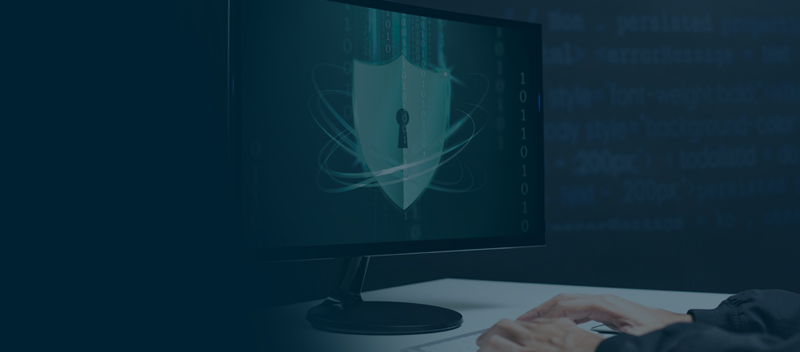
Human error accounts for 68% of security breaches in 2024, making it a primary vulnerability. From phishing scams to ransomware attacks, these threats often target employees, exploiting gaps in awareness and judgment. This is where cybersecurity awareness training becomes indispensable. By educating your workforce on recognizing and responding to cyber threats, you strengthen your first line of defense: your employees. With comprehensive employee security training programs, businesses can reduce incidents of phishing, social engineering, and mishandling of sensitive data. Why prioritize training now? Phishing schemes are more targeted and harder to detect. Regulatory frameworks like GDPR and HIPAA demand compliance. The rise of remote work increases exposure to vulnerabilities. TrustNet provides the expertise to address these challenges head-on. Combining simulation tools, proactive monitoring, and tailored training solutions, TrustNet equips organizations to prevent cyberattacks while embedding a culture of vigilance among employees. Why Cybersecurity Training Matters As we stated earlier, security breaches mostly result from human errors. Whether it’s a misplaced click on a phishing email or mishandling sensitive data, gaps in awareness can lead to catastrophic consequences. Effective training equips employees with the knowledge to spot and avoid threats like phishing schemes, malware, and social engineering attacks. A well-trained workforce significantly reduces the risk of falling victim to these exploits. Key Reasons to Prioritize Cybersecurity Training: — Phishing attack prevention Phishing remains one of the most common threats, with attackers crafting emails and websites that mimic legitimate sources. Teaching employees how to recognize red flags, such as unusual email sender addresses or urgent requests, is essential. — Addressing human error in cybersecurity Mistakes happen, but training can reduce their frequency. Simulations and guided workflows prepare employees to handle real-world scenarios with confidence. — Cybersecurity compliance Regulatory frameworks like GDPR and HIPAA mandate strict data protection protocols. Non-compliance can lead to hefty fines and reputational damage. Security training ensures employees understand and adhere to these requirements. The Benefits of Employee Cybersecurity Education: Reduces breach risks. Training empowers employees to act as a strong frontline against intrusions. Fosters a culture of security. Consistent awareness reinforces vigilance across teams. Protects your bottom line. Prevention is always more cost-effective than damage control. Organizations face an evolving threat landscape, and relying solely on technology is no longer enough. Comprehensive training not only shields businesses from external attacks but also lays the foundation for long-term resilience. For more info on our Security Awareness Training Platform, Click Here Key Components of Effective Training A robust cybersecurity training program is about building habits and skills that actively protect your organization. Here are the cybersecurity training best practices that every business leader, IT manager, HR professional, and compliance officer should consider: 1. Phishing Simulations to Test Employee Vigilance One of the biggest risks to companies is still phishing, and attackers are always improving their tactics. Phishing simulation tools should be included in training programs to assess staff members’ capacity to recognize and react to these schemes in a secure setting. Nowadays, AI-driven simulation tools are designed to closely resemble real-world phishing attempts. This approach sharpens employee awareness and provides insights into weak points that need reinforcement. 2. Password Hygiene and Multi-Factor Authentication Weak or compromised passwords are a major gateway for cyberattacks. Effective programs prioritize password security training, teaching employees how to create strong, unique passwords and maintain them securely. When paired with multi-factor authentication (MFA), businesses can add critical layers of protection. Training should explain how MFA works, requiring a second verification step, like a text code or biometric scan, and its role in protecting sensitive company assets. 3. Incident Reporting Workflows and Real-Time Threat Updates Even with the best preventive measures, mistakes and breaches happen. By educating staff members on incident reporting procedures, issues are discovered and resolved quickly, reducing adverse effects. Your program should also include real-time updates on emerging threats. Cybercriminals evolve quickly, so keeping your team informed about new tactics helps ensure they remain vigilant. TrustNet’s Approach to Cybersecurity Training Businesses require a customized strategy that considers their unique risks and challenges. TrustNet cybersecurity solutions are designed to do just that, empowering organizations with customized security training and building enterprise cyber resilience across industries. — Tailored Training for Diverse Industries One of TrustNet’s key strengths is its ability to adapt training modules for specific industries, such as healthcare, finance, and beyond. These industries have particular operational and regulatory challenges, so general training is inadequate. TrustNet meets these needs by implementing distinct data security procedures that guarantee compliance with industry norms while combating common threats. — Cutting-Edge Tools and Resources TrustNet goes beyond conventional training methods by integrating immersive tools and resources into its programs: Real-World Simulations: Employees engage with highly realistic simulations of phishing, smishing, and vishing attacks. With thousands of templates and patterns, these exercises prepare teams to handle the most convincing threats. User Training Materials: From videos and games to graphics and in-depth articles, TrustNet delivers engaging educational content for every type of learner. This variety helps reinforce learning across the organization. Compliance Dashboards: Organizations can track the success of their programs with security awareness metrics. These dashboards provide real-time insights into user progress and training ROI, supporting data-driven decision-making. — Building a Culture of Cybersecurity TrustNet’s approach fosters cybersecurity culture development through ongoing education and adaptable strategies. With monthly threat briefings, employees remain current with the latest risks, ensuring their vigilance evolves alongside emerging challenges. This continuous learning model reinforces a mindset where security becomes second nature. — Measurable Results and ROI TrustNet’s solutions are built to deliver results. Metrics such as reduced phishing click rates, improved password management practices, and enhanced compliance readiness showcase the tangible impact of security training for remote teams and in-office employees. Protect Your Business with TrustNet Modern cybersecurity challenges need strategic partnerships rather than reactive fixes. TrustNet provides the expertise and tools needed to turn your team into a vital line of defense, guaranteeing quantifiable results through tailored strategies. Key Benefits of Partnering with TrustNet Tailored Roadmaps: Gain actionable plans for long-term
The Top 5 Cybersecurity Threats to Watch Out for in 2025 (Emerging Threats & Solutions)
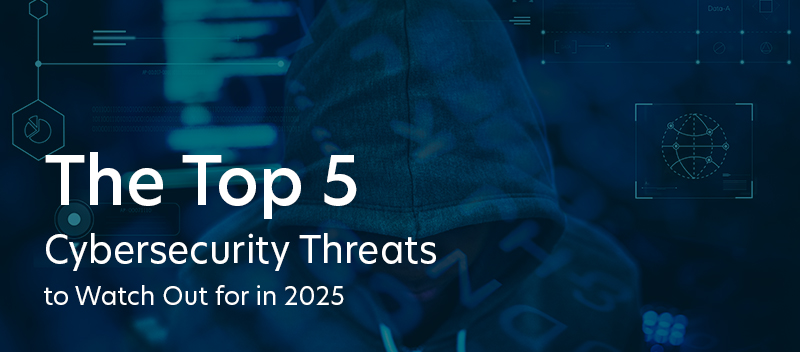
As technology advances, so do cybercriminals’ tactics, resulting in increasingly complex vulnerabilities. The cybersecurity threats in 2025 are not hypothetical; they represent clear and present dangers to businesses and individuals alike. The risks are growing and adapting faster than many organizations can respond. Staying ahead of future cyber risks is no longer optional. It’s a necessity. Identifying emerging digital dangers before they escalate Understanding the cybersecurity landscape evolution to strengthen resilience Leveraging threat prediction tools to outpace malicious actors TrustNet is at the forefront of safeguarding against these challenges. By utilizing advanced predictive threat intelligence, TrustNet empowers organizations to anticipate and counter cyber risks proactively. Combining innovative technology and expert insights, this approach ensures you stay protected in a rapidly changing environment. Effective cybersecurity doesn’t just happen; it demands preparation, adaptability, and strategic action. This guide will uncover the top threats to watch for in 2025 and offer practical solutions to keep your organization secure. Threat #1: AI-Powered Cyber Attacks The rise of artificial intelligence (AI) has brought incredible advancements, but it’s also given cybercriminals new tools to exploit. AI-driven cyber-attacks are emerging as a top threat, combining intelligence and adaptability to outmaneuver traditional defenses. Organizations must recognize the growing complexity of these threats to remain protected. How AI is Changing the Game Attackers are using artificial intelligence in unprecedented ways, including: Intelligent malware that learns and adjusts its tactics to evade detection. Adversarial AI that manipulates machine learning models, exploiting weaknesses in security systems. Automated hacking to scale operations and target multiple systems simultaneously with extreme precision. These new technologies allow cybercriminals to create attacks that mimic legitimate user behavior or adapt in real-time, making them harder to detect and counter. Why These Threats Are Challenging to Stop Evasiveness: AI-powered threats blend into normal activity, dodging detection systems. Adaptability: They evolve rapidly, bypassing static defenses. Impact: The scale and speed of these attacks can overwhelm even the most advanced cybersecurity teams. The Potential Impact The risks aren’t limited to data breaches or financial losses. These threats could: Compromise critical infrastructure, such as power grids or healthcare systems. Disrupt global supply chains, creating widespread ripple effects. Jeopardize sensitive data, leading to operational chaos and reputational damage. TrustNet’s Proactive Approach Combatting AI-driven cyber-attacks requires staying ahead with innovative solutions. TrustNet employs advanced threat detection and response systems to neutralize these risks before they escalate. Our strategies include: Leveraging AI to identify unusual patterns and respond in real-time. Using predictive intelligence to anticipate threats before they strike. Providing expert-backed frameworks that adapt to evolving attack techniques. With our proactive solutions, businesses can safeguard their operations and reduce vulnerabilities. The key is not to react — but to anticipate. For more info on our cybersecurity and compliance services, Schedule a Call with Our Experts Today Threat #2: Quantum Computing Vulnerabilities Quantum computing threats represent a potential game-changer by undermining the encryption methods we rely on today. If quantum supremacy becomes a reality, current cryptographic standards may no longer hold up — leaving sensitive data vulnerable to exploitation. How Quantum Computers Threaten Security Unlike traditional computers, quantum systems harness quantum bits (qubits) to perform calculations at unimaginable speeds. This could allow them to break widely used encryption protocols like RSA and ECC, which depend on the difficulty of solving complex mathematical problems. Once these defenses fall, attackers could decrypt secure communications or access critical information with ease. Key risks include: Cryptographic vulnerability in enterprises using outdated encryption standards. Quantum supremacy risks, where hackers could exploit superior quantum machines to bypass defenses entirely. When Will Quantum Threats Become Real? Experts estimate that practical quantum computers capable of breaking encryption may emerge within the next 10 to 20 years. However, the transition to post-quantum cryptography must begin now. Waiting until these threats fully materialize could lead to significant data breaches, particularly for industries handling long-term sensitive data. Industries Most at Risk Some sectors face higher exposure to quantum computing threats due to the nature of their data: Finance: Compromised encryption in banking systems could lead to fraud and financial instability. Government: Security clearance data, intelligence archives, and critical infrastructure could be jeopardized. Healthcare: Patient records and biomedical research data could face mass breaches. TrustNet’s Quantum-Safe Solutions To combat these future threats, TrustNet offers robust solutions: Implementing encryption methods that secure sensitive data against quantum attacks. Providing comprehensive transition strategies to help businesses migrate to post-quantum cryptography without disrupting operations. Utilizing proactive risk assessments to identify and mitigate cryptographic vulnerabilities before quantum tech evolves further. The challenges posed by quantum supremacy risks demand immediate action. By adopting quantum-safe security now, you can protect your organization from threats that aren’t just theoretical but imminent. Threat #3: Advanced IoT Exploits With billions of devices now interconnected, IoT security threats in 2025 are anticipated to grow in scale and sophistication. The Expanding Threat Landscape IoT devices, from smart thermostats to industrial control systems, are embedded in crucial parts of our lives and operations. Unfortunately, their convenience often comes at the expense of robust security. Smart device vulnerabilities often arise from poorly implemented security measures or outdated software. IoT botnet evolution has enabled attackers to hijack massive networks of connected devices for devastating distributed denial-of-service (DDoS) attacks. Connected device attacks exploit endpoints that are either unsecured or under-protected, threatening personal and corporate environments alike. The integration of IoT with edge computing adds another layer of complexity. While edge computing boosts efficiency and speed, it also introduces edge computing risks by increasing potential entry points for hackers. Securing a Sea of Devices Protecting IoT ecosystems is uniquely challenging because of their diversity and the sheer number of endpoints. Many IoT devices lack robust security features due to cost or design priorities. Managing updates and deploying security patches over a massive network of devices is time-intensive and difficult. Malicious actors are continually developing more advanced malware targeting IoT infrastructures, leaving outdated systems at heightened risk. Without a comprehensive strategy, organizations may find themselves unable to manage these vulnerabilities, exposing critical systems to
Third-Party Cyber Risk Management: Assessment and Continuous Monitoring

Cyber risks linked to third-party vendors are a growing threat to organizations everywhere. From supply chain partners to service providers, these external relationships, while essential, can expose businesses to significant vulnerabilities. High-profile data breaches tied to vendors have shown just how costly these risks can be; think financial losses, tarnished reputations, and regulatory penalties. Managing third-party cyber risks is no longer optional. It’s a critical business priority. Identifying risks across your network of vendors and partners Assessing security practices to ensure compliance and resilience Continuously monitoring vendor security to stay ahead of potential threats This isn’t a one-and-done process; continual vigilance is key. From performing cyber risk assessments to setting continuous monitoring procedures in place, this guide will show you how to take practical actions to safeguard the business you run. Third-Party Cyber Risk Assessment Effective third-party cyber risk management begins with a thorough assessment process. This involves understanding vendor vulnerabilities, evaluating security controls, and ensuring compliance with critical regulations. Below are the key steps to building a robust risk assessment framework that protects your organization. — Vendor Due Diligence Before onboarding any vendor, conducting detailed due diligence is essential to identify potential risks. Key actions include: Information Gathering Review contracts, policies, and service agreements. Utilize questionnaires to assess vendor security practices. Perform security audits to uncover potential weaknesses. Risk Scoring and Prioritization Rank vendors based on their criticality to your operations and the sensitivity of the data they handle. Focus on high-risk vendors first, ensuring your resources are spent where protection is most needed. Assess Vendor Security Controls Verify access controls, data encryption protocols, and incident response plans. Ensure vendors align with your organization’s cybersecurity requirements. Evaluate Compliance with Regulations Confirm adherence to industry-specific laws like GDPR, HIPAA, or CCPA. Non-compliance among vendors can expose your business to legal repercussions. — Risk Assessment Methodologies Choosing the right approach to risk assessment can help streamline the process and provide actionable insights. Qualitative Risk Assessments Use tools like risk registers or scoring matrices to identify potential issues. Focus on scenarios and qualitative feedback to gain a holistic understanding. Quantitative Risk Assessments Employ techniques like fault tree analysis or risk factor evaluations to measure impacts in tangible terms, such as financial loss or operational disruption. — Third-Party Risk Management Platforms and Tools Tools like TrustNet’s iTrust can simplify third-party risk management by delivering actionable intelligence and automating critical tasks. Here’s how iTrust can help: 1. Vendor Risk Management iTrust conducts comprehensive assessments to identify weaknesses within your vendor ecosystem, ensuring long-term resilience. 2. 360° Assessments Gain full visibility into internal and external vulnerabilities, allowing for a well-rounded approach to vendor security. 3. Compliance Monitoring Stay aligned with evolving regulations while minimizing risks and maintaining your organization’s integrity. Even with strong internal strategies, partnering with experts like TrustNet offers an invaluable layer of protection. For more info on our Vendor Risk Management services, Click Here Continuous Monitoring of Third-Party Risks Here’s how you can make continuous monitoring a core part of your third-party risk management program: — Real-Time Monitoring Staying informed about vendor-related risks in real-time can help you respond proactively. Key actions include: Tracking Security News and Threat Intelligence Monitor cyber threat reports and news that could impact your vendors. Identify emerging risks, such as data breaches or malware threats, tied to your third-party partners. Assessing Vendor Security Postures Keep an eye on any changes in vendor security, such as updates to policies, practices, or personnel. Using Security Rating Services Leverage platforms offering security ratings like iTrust to evaluate vendors’ risk levels consistently and efficiently. — Automated Monitoring Automation streamlines the monitoring process, saving time while improving accuracy. Consider the following steps: 1. Integrating with Vendor Security APIs Use APIs to access real-time data on vendor security systems. These integrations offer instant updates on vulnerabilities and compliance status. 2. Conducting Vulnerability Scans and Penetration Tests Automate regular scans to identify weaknesses in your vendors’ systems. Simulate cyberattacks to evaluate how effectively vendors can respond to real-world threats. 3. Regular Reviews and Assessments Even with real-time and automated monitoring in place, periodic evaluations remain critical. Build them into your processes to maintain comprehensive oversight. 4. Reassess High-Risk Vendors Periodically Focus on reviewing vendors handling sensitive data or critical operations. Prioritize these reviews based on their associated risk levels. 5. Collaborate with Vendors Maintain regular communication to share feedback, address concerns, and highlight areas for security improvements. Work together to develop security roadmaps or address recurring issues effectively. Overall, these strategies not only reduce potential vulnerabilities but also foster stronger, more transparent relationships with your vendors. Mitigating Third-Party Cyber Risks Even the best-prepared organizations face risks when working with third-party vendors. Here’s how you can address key areas of risk: Contractual Agreements Strong contracts set the foundation for secure vendor relationships. They define expectations and hold vendors accountable for maintaining robust cybersecurity practices. Key steps include: 1. Adding Security Clauses Specify minimum security standards and requirements, such as encryption, access controls, and regular audits. Include provisions for immediate notification in case of a security breach. 2. Defining Service Level Agreements (SLAs) Create measurable security performance benchmarks. Ensure SLAs outline consequences for non-compliance, such as remediation efforts or termination clauses. 3. Incident Response Planning No organization is immune to incidents, which is why having a robust response plan in place is essential. With vendors in the picture, this process becomes even more crucial. 4. Develop a Third-Party Incident Plan Map out clear steps for responding to breaches involving vendors. Include roles and responsibilities for both your team and the vendor. Define timeframes for reporting incidents and initiating recovery actions. 5. Establish Communication Channels Set up direct ways to reach vendors during a crisis. Use escalation procedures to speed up decision-making and minimize response times. 6. Security Awareness Training Third-party cyber risks don’t just live with vendors. Employees within your organization also need awareness and training to mitigate these threats. 7. Educate Employees on Vendor Risks Give helpful suggestions on how to mitigate the
Purple Team Security Testing: Enhancing Your Cybersecurity Strategy
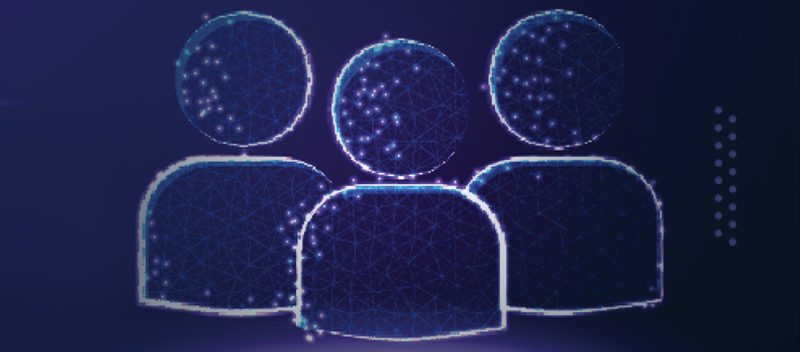
Purple Team Security Testing offers a solution by combining offensive Red Team tactics with defensive Blue Team strategies. This collaborative approach strengthens cybersecurity defenses and bridges gaps in traditional practices. Key benefits of Purple Team testing include: Improved threat detection through joint simulation exercises. Enhanced threat intelligence leveraging shared expertise. Better incident response facilitated by seamless communication. A stronger overall security posture to combat evolving threats. Traditional penetration testing often fails to reflect the complexity of real-world cyberattacks or promote teamwork between security roles. By promoting cooperation, Purple Teaming gets around these restrictions and keeps your business proactive and well-defended. This article will break down the evolution of cybersecurity testing, explore the limitations of traditional methods, and highlight how Purple Team testing can transform your security framework into a resilient, cohesive strategy. Key Components of Purple Team Security Testing Unlocking Purple Team Security Testing’s full potential requires an understanding of its core components. – Red Team Activities The Red Team is your simulated adversary tasked with exposing vulnerabilities by mimicking real-world attackers. Their activities include: Advanced threat emulation, replicating sophisticated tactics used by cybercriminals. Exploiting weaknesses in systems, applications, or networks to uncover risks. Simulating real-world attacker techniques, such as phishing and social engineering, to test organizational resilience. These offensive strategies give organizations valuable insight into their security readiness and areas needing improvement. – Blue Team Activities The Blue Team is the defense, ensuring your organization can detect, respond to, and recover from potential threats. Their focus areas include: Threat hunting and advanced detection to find malicious activities before they escalate. Incident response and remediation, enabling swift action to contain and neutralize threats. Enhancing security controls through reinforced policies and technical measures to prevent breaches. These activities fortify your defenses, creating a secure and proactive environment. – Collaboration and Communication What makes Purple Teaming unique is its emphasis on teamwork. Through open collaboration, Red and Blue Teams work together to maximize security outcomes by: Maintaining continuous communication during tests to stay aligned. Sharing insights and findings to build comprehensive threat intelligence. Jointly analyzing vulnerabilities and mitigation strategies to close gaps effectively. This collaborative model ensures that vulnerabilities are addressed collectively, fostering a stronger, more cohesive security posture. For more info on our Penetration Testing services, Click Here Implementing a Successful Purple Team Program To maximize the benefits of Purple Team Security Testing, a structured approach is essential. Here’s how to implement a successful Purple Team program. Defining Scope and Objectives A well-planned Purple Team exercise starts with clearly defined goals. Without a clear direction, efforts can become unfocused and inefficient. Key steps include: Setting specific objectives to identify the outcomes you aim to achieve, such as improved threat detection or better incident response. Defining the scope by outlining what systems, networks, or applications will be tested. Establishing boundaries to ensure tests do not disrupt critical operations or exceed ethical limits. Articulated plans ensure the exercise remains targeted and actionable. Building a Skilled Purple Team The success of your program highly depends on the expertise and collaboration of your team. Focus on: Recruiting experienced professionals, including Red Team attackers and Blue Team defenders, who understand the nuances of advanced cyber threats. Training team members to ensure they are up to date on the latest tools and techniques used in threat simulation and detection. Fostering a collaborative culture where team members work together, share findings openly, and align on shared goals. A skilled and cooperative team is integral to bridging the offense-defense divide. Establishing Clear Rules of Engagement To maintain integrity and safety during the testing process, clarity is key. This involves: Defining boundaries for acceptable testing activities, avoiding actions that could cause disruptions or unintended harm. Ensuring data privacy and confidentiality to protect sensitive information from exposure during exercises. These rules not only guide the team but also build trust across the organization, ensuring stakeholders feel confident in the program. Continuous Improvement Cyber threats evolve continuously, and so should your strategies. To maintain an effective defense: Regularly review and refine exercises, incorporating lessons learned to close security gaps. Update security controls and policies based on test findings, turning insights into actionable improvements. By committing to continuous improvement, organizations can stay ahead of emerging threats and maintain a robust security posture. Tools and Technologies for Purple Team Testing Below are the tools and technologies that support effective Purple Team operations. — Threat Intelligence Platforms Threat intelligence platforms form the foundation of proactive security. Key features include: Aggregating threat intelligence data from multiple sources to provide a comprehensive understanding of potential risks. Analyzing trends and patterns to anticipate attacker behaviors and prepare defenses accordingly. Using these platforms ensures that both Red and Blue Teams operate with the most relevant and current data. — Security Information and Event Management (SIEM) Systems SIEM systems play a vital role in Purple Teaming by centralizing and monitoring security events. Essential capabilities include: Real-time monitoring of logs and events, providing insights into potential breaches as they develop. Correlating data from various sources to identify complex attack patterns. With SIEM systems, Blue Teams can respond faster to threats, while Red Teams can validate the effectiveness of existing detection mechanisms. — Vulnerability Scanners Vulnerability scanners help identify weaknesses within your environment, allowing teams to address risks before they are exploited. They provide: Automated assessments of networks, systems, and applications, uncovering known vulnerabilities. Prioritized results so teams can focus their efforts on the most critical risks. These tools are invaluable for maintaining a secure baseline and ensuring systems remain resilient over time. — Penetration Testing Tools Penetration testing tools simulate real-world attack techniques, enabling Red Teams to assess an organization’s defenses under pressure. Their key functions include: Replicating attacker behaviors, such as exploiting software flaws or bypassing security controls. Testing defenses in a controlled setting guarantees that vulnerabilities are found without interfering with business operations. Together, these solutions enable a comprehensive approach to identifying, testing, and mitigating cybersecurity risks. Sustaining GDPR Compliance: A Continuous Journey Purple Team Security Testing


